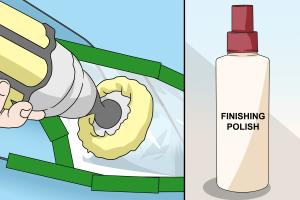Ultimate Guide on How to Clean Foggy Plastic: Tips & Tricks

-
Quick Links:
- Introduction
- Understanding Foggy Plastic
- Causes of Foggy Plastic
- Cleaning Methods
- Step-by-Step Guides
- Case Studies
- Expert Insights
- FAQs
- Conclusion
Introduction
Foggy plastic surfaces can be frustrating, especially when they obscure visibility or diminish the aesthetic appeal of your items. Whether it's a car headlight, plastic lens, or household items, fogginess can accumulate over time due to various factors. In this comprehensive guide, we'll explore how to effectively clean foggy plastic and restore its clarity.
Understanding Foggy Plastic
Plastic items, especially those exposed to the elements, can become cloudy or foggy for several reasons. Understanding these causes is crucial in selecting the right cleaning method.
Types of Plastic
- Polycarbonate: Commonly used in eyewear and automotive headlights.
- Acrylic: Often used in displays and signs.
- PVC: Used in various household items.
Causes of Foggy Plastic
There are several reasons why plastic may become foggy over time:
- UV Exposure: Prolonged exposure to sunlight can degrade plastic surfaces.
- Scratches: Small scratches can trap dirt and moisture, leading to a cloudy appearance.
- Environmental Contaminants: Dust, grime, and chemicals can accumulate on plastic.
Cleaning Methods
There are various methods you can use to clean foggy plastic. Here are some effective solutions:
1. Household Solutions
- Toothpaste: A mild abrasive that can polish out scratches and fogginess.
- Baking Soda: Mix with water to form a paste for scrubbing.
- Vinegar and Water: A natural solution for cleaning without chemicals.
2. Commercial Products
Many products are specifically designed for cleaning foggy plastic. Look for:
- Plastic polish
- Automotive headlight restoration kits
- Specialty cleaners for acrylic and polycarbonate
3. Professional Services
If the plastic is severely damaged, consider professional restoration services that can restore clarity without causing further damage.
Step-by-Step Guides
Guide 1: Cleaning Car Headlights
- Gather materials: toothpaste, baking soda, clean cloth.
- Apply toothpaste to the foggy area.
- Scrub gently with a cloth in a circular motion.
- Rinse with water and dry with a soft cloth.
Guide 2: Restoring Plastic Furniture
- Prepare a vinegar-water solution.
- Soak a cloth in the solution and wipe the surface.
- Use baking soda paste for stubborn spots.
- Rinse and dry thoroughly.
Case Studies
Real-world examples can provide insight into effective cleaning methods. Here are a few:
Case Study 1: Restoring a Foggy Headlight
A customer used a toothpaste method to restore clarity to their vehicle's headlights, achieving a noticeable difference in brightness and safety.
Case Study 2: Acrylic Display Cleaning
Using a commercial acrylic cleaner, a retail store was able to maintain the appearance of their product displays, enhancing customer experience and sales.
Expert Insights
We consulted with cleaning experts who emphasized the importance of regular maintenance to prevent fogginess. They recommend:
- Regularly cleaning plastic surfaces to prevent build-up.
- Using UV protectant sprays for outdoor plastic items.
FAQs
1. What is the best way to clean foggy plastic?
The best method depends on the type of plastic, but toothpaste and baking soda are generally effective for mild fogginess.
2. Can I use vinegar on all types of plastic?
Vinegar is safe for most plastics, but always test on a small area first.
3. How often should I clean foggy plastic?
Regular cleaning every few months can prevent fogginess from building up.
4. Are commercial cleaners worth it?
Yes, especially if you have heavily fogged or scratched plastic. They often provide better results than DIY methods.
5. Can foggy plastic be restored completely?
Most foggy plastic can be restored, but severe damage may require professional service.
6. What should I avoid when cleaning foggy plastic?
Avoid abrasive cleaners or scrubbing pads that can cause scratches.
7. Is there a way to prevent plastic from becoming foggy?
Using UV protectant sprays and keeping items covered or indoors can help prevent fogging.
8. Can I use a hairdryer to clean foggy plastic?
A hairdryer is not recommended as it can warp the plastic due to heat.
9. How do I clean foggy plastic headlights?
Use toothpaste or a headlight restoration kit following the manufacturer's instructions.
10. Will cleaning foggy plastic damage it?
If done correctly, cleaning will not damage plastic. Always use gentle methods.
Conclusion
Cleaning foggy plastic surfaces doesn't have to be a daunting task. By understanding the causes, employing the right cleaning methods, and maintaining your plastic items, you can restore clarity and extend their life. Whether you opt for DIY solutions or commercial products, a little care can go a long way in keeping your plastic looking like new.
References
- Consumer Reports: How to Clean Foggy Headlights
- Home Depot: How to Clean Plastic Furniture
- Ace Hardware: How to Clean Acrylic
Random Reads